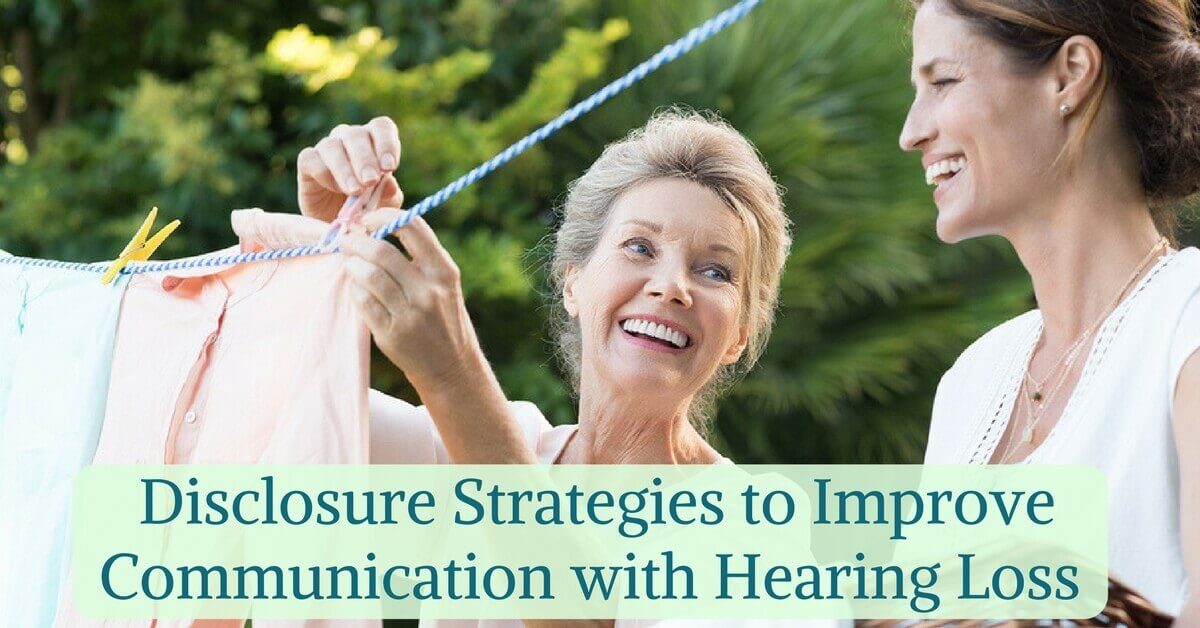Communication is Key to Connection: Disclosure Strategies to Improve Communication with Hearing Loss
Hearing loss affects 20% of Americans and is even more common among older populations (30% of people over 65 and 50% of people over 75 years of age). Even with these statistics, it is often difficult to identify if someone is experiencing hearing loss, especially if it is left untreated.
For people who have recently been diagnosed with hearing loss, or perhaps are experiencing the early signs of hearing loss, speech recognition poses one of the greatest challenges, especially in circumstances with big groups and many speakers. In a recent study, researchers found that the mode of disclosure that you employ to communicate your experience with hearing loss greatly affects the quality of your communication.
Study: How People Disclose Their Hearing Loss with Communication Partners
In 2015, the Massachusetts Eye and Ear conducted a study on disclosure strategies to determine whether the strategies affected future communication. The study, published in the journal Ear and Hearing, consisted of 337 participants, who took a 15-minute survey to gather information about how they let others know about their hearing loss. In this study, researchers found that participants could be categorized in three main groups: non-discloser, basic discloser, and multi-purpose discloser. These three main types of disclosure lead to varying consequences on communication.
The Three Types of Disclosure Methods
Dr. Konstantina M. Stankovic, one of the researchers on this study, expressed one of the goals: “Health care providers are in a key position to help patients learn to disclose their hearing loss. We can educate them on the disclosure strategies we report in our study, which may help them gain the confidence they need to disclose their hearing loss and improve communication with others.
The three forms of disclosure are non-disclosure, basic disclosure, and multi-purpose disclosure.
Non-Disclosure
People who employed the non-disclosure strategy avoided discussing their hearing loss completely. In situations where they are unable to hear, they might say, “I can’t hear you. Please speak up.” One problem with non-disclosure is that it provides no information about your hearing abilities. This means that others are not aware of your hearing loss and therefore will not know to shift their behavior to meet your hearing needs.
Basic Disclosure
People who use basic disclosure to discuss their hearing loss give some details, but is not particularly specific. For example, a basic discloser might say, “I am partially deaf due to an infection I had as a child.” Basic disclosure does indicate to people that you may need accommodation in conversation or other listening situations, though more detail could be helpful to your communication partners.
Multi-Purpose Disclosure
Multi-purpose disclosure is a method that simultaneously reveals your hearing loss and provides your communication partners with tools for accommodation. People who are multi-purpose disclosures might say, “I don’t hear as well out of my left ear. Please walk on my right side.” This provides people with information on how they can better communicate with you.
Multi-Purpose Disclosure Recommended as Best Method for Communication
From the results of this study, researchers indicate that multi-purpose disclosure is the best method to employ with your communication partners. Multi-purpose disclosure is effective in that it indicates that you experience a hearing loss and provides recommendations for accommodation.
According to Dr. Stankovic, “Hearing loss is an invisible disability; however, asking people to slow down or face someone with hearing loss while speaking may improve communication.” Healthy communication is fundamental to healthy relationships. If you experience a hearing loss, employing the method of multi-disclosure is just one way to help improve communication in your interpersonal relationships.
May is Better Speech and Hearing Month
The American Speech Language Hearing Association (ASHA) coordinates Better Speech and Hearing Month every May. For 2017, the theme is “Communication: The Key to Connection.” While it is the general goal for ASHA to raise awareness about hearing loss and communication disorders, there is also a focus on individual experiences and how hearing loss can affect our everyday interactions.
Hearing loss is the third most common medical condition in the United States and it results in far-reaching consequences, from our overall health to our earning power on the job to our interpersonal relationships. When it comes to communication and healthy relationships, leaving hearing loss can do a lot of damage.
The first step to better hearing health is to take a hearing test. At Hear Care Rhode Island, we provide comprehensive hearing tests and hearing aid fittings. Contact us today to schedule a hearing test during Better Speech and Hearing Month.

